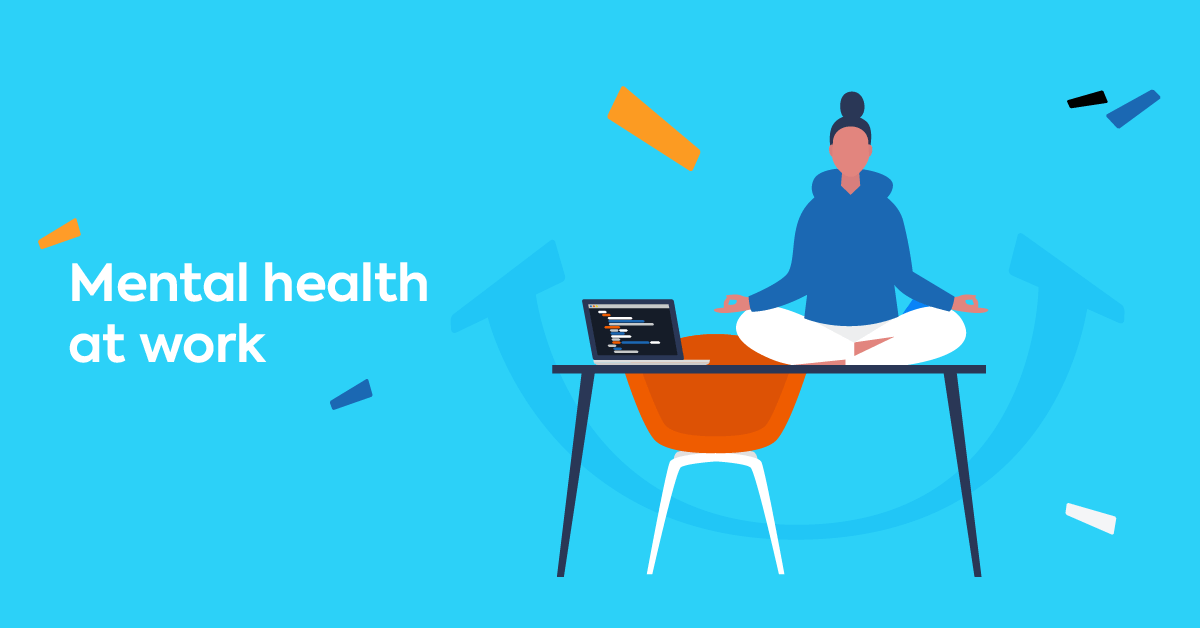No, you’re not imagining it. Everyone seems to be talking about employee wellbeing lately.
Keeping employees content sounds like a reasonable thing to aim for regardless of circumstances, right? And yet it’s taken a whole year of pandemic and remote work for “employee wellbeing” to become one of the most popular phrases in the HR community.
It’s more than just a buzzword, though. When we look at how the pandemic has affected employees, it becomes clear that a focus on wellbeing is necessary for any company that wants to keep hitting its goals.
Here’s what you need to know about it.
How the pandemic has affected employee wellbeing
It’s been a rollercoaster year for the workplace.
As a big part of the workforce had to switch to remote work, new challenges and habits have arisen. People are struggling to stay motivated during these uncertain times. Striking the balance between work and personal life has become even more challenging. And, at the same time, the pandemic outbreak has caused various physical and mental health problems. Understandably, all these issues affect work performance.
The latest TalentLMS remote work survey found that people need help staying motivated while working from home. For 49% of them, talking to a colleague helps.
Of course, being at the office pre-pandemic didn’t necessarily make all employees ecstatic with joy. But the majority of them felt at least secure in their jobs: if they weren’t, they could always start searching for another one. And for most of them, being part of a team, especially in companies with a great culture, was a big plus.
This sense of security and belonging seems to be missing now for many — and that takes a big toll on workplace happiness. The data captured in a Gallup survey paints a somber picture: during an average workday, 47% of employees feel worried and 24% feel lonely. This is a big departure from “business as usual”.
Of course, employers are not blind to the problem.
As David Plans points out in this Forbes article, more than two-thirds of employers believe that the pandemic will have a serious impact on employee wellbeing. They understand that investing in mental health training and services and resilience management should be one of their priorities for 2021.
Cue employee wellbeing.
Build employee training courses online with TalentLMS.
The training platform that users consistently rank #1.
Easy to set up, easy to use, easy to customize.
The link between workplace training and workplace happiness
So how does one go about boosting employee wellbeing?
Building a company culture that’s caring and takes preventive steps against employee isolation goes a long way, of course. Checking in with your team often, especially now that everyone is trapped in their own private bubble, helps. Reconsidering work schedules to allow for more flexibility is also a step in the right direction.
Do you know what else can significantly boost employee wellbeing though? Training.
It sounds counterintuitive at first. “My employees are sad, lonely, and stressed so I’m going to give them more things to study and stress about?” you may think.
But that’s not the case at all. Human beings are curious by nature; we love to learn new things and evolve. (And many sourdough starters can attest to that.) Apart from being extremely beneficial for your business, workplace training is also extremely beneficial to mood and morale.
This actually became clearer last year, with the shift to remote work.
Data from the TalentLMS remote work statistics survey shows that employees are actively seeking training. Seventy-eight percent of those who haven’t received training from their employees said they would like to, whereas 82% of them said they’d even complete it outside of working hours. In fact, 45% of them specified that they would do so because they enjoy training.
Workplace training serves many functions for employees.
It’s not just the fact that, through training, employees update their knowledge and can stay relevant in an ever-changing market. Training can also help prevent burnout, as employees can learn productivity hacks or how to use a new tool.
Training also boosts confidence. In the same TalentLMS survey, remote employees that had received training rated themselves a 4 or 5 at consistently higher rates than those that received no training. They’ve also rated themselves higher when it comes to happiness while working from home and feeling valued by their companies.
Obviously, everyone wants to feel confident and happy at work. So it makes sense that employees trust employers who invest in their training more. Another TalentLMS survey showed that 74% of employees who haven’t received any upskilling/reskilling training, would prefer to work for a company that offers such training opportunities.
So there you have it: offering employee training boosts employee wellbeing.
Of course, employee training also has a ton of other benefits for your company. The majority of employers in the TalentLMS upskilling/reskilling survey say that training has improved performance, employee retention, goals, and company reputation.
It’s basically a win-win.

How to optimize your employee training for employee wellbeing
Now that you know why employee wellbeing is so important and that training helps significantly, it’s time to recalibrate. How do you optimize the workplace training you’re already offering so that it becomes training for wellbeing?
First, you need to consider the social aspect of it.
Remember how in the Talent LMS remote work statistics survey 49% said that talking to a colleague helps with motivation? That’s not all it helps with. Communication and collaboration help with information retention: humans simply learn better when they learn together.
By creating opportunities for teamwork and offering tools (like a Slack channel or the option to direct messages during a Zoom call) that allow employees to come together in an informal way, you boost both their learning experience and their social wellbeing. And by pairing up employees from different backgrounds/skill sets to work together on training assignments, you also help eliminate skill gaps.
(Want to learn more about the fascinating topic of social learning? This article that explains what social learning is and how to apply it in the workplace is a good starting point.)
Then you need to make sure to listen to what your employees want and think.
Use post-training evaluation surveys to gather feedback and see whether they liked training, whether they found it too hard, or what kind of training they’d like in the future. Make sure to include questions about:
- content
- frequency
- inclusivity of the language and graphics
- method of delivery
Make these answers your starting point in your training optimization.
You can also offer non-mandatory training in topics your employees are passionate about. By utilizing a full library of courses like TalentLibrary™, you can give your employees endless options of soft skill courses they could take. You can also run surveys to see which subject most of your employees would like to explore next.
Or, you can create an “employee wellbeing” training bundle that offers mental health training, mindfulness, productivity, conflict resolution, and other wellbeing-related topics.
For example, if you want to create a mindfulness training program, for individuals or teams, Gina Lionatos, Brand Marketing Manager at TalentLMS, shares some quick tips:
Meet TalentLibrary™
A growing collection of ready-made courses that cover the soft skills
your teams need for success at work
![]()

Conclusion
Employee wellbeing is not just another box to tick. To boost employee wellbeing means to create happy, productive, and loyal employees. These people are much more resilient during tough times, perform better, and are less likely to take unplanned days off work.
Offering employees workplace training strengthens both their mood and their bond with your company.
| Tags: Employee Engagement



